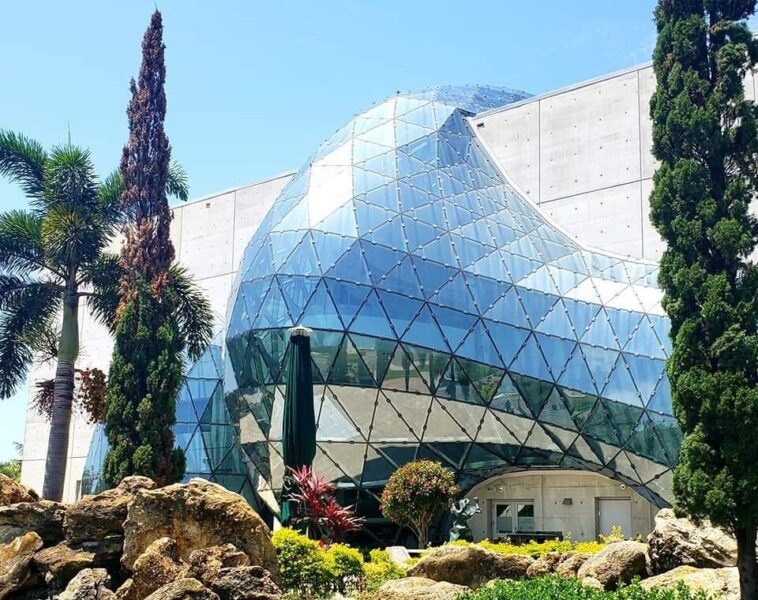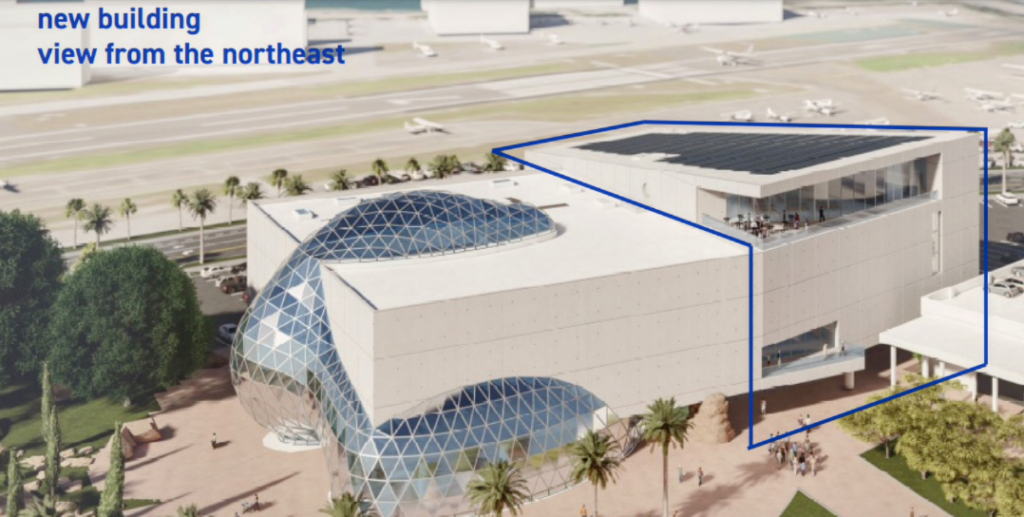Thrive
Commissioners approve Dali funding despite beach woes

While concerns surrounding beach renourishment funding nearly derailed Tuesday’s vote, Pinellas County Commissioners approved giving Dali Museum officials $25.16 million for a significant expansion.
That was less than the $34 million requested by Dr. Hank Hine, the St. Petersburg institution’s executive director. Local leaders comprising the Tourist Development Council (TDC) recommended providing the full ask – half of a $68 million project – in May.
However, county officials lack funding for critically eroded beaches due to an easement impasse with the Army Corps of Engineers and private property owners. A $57 million Sand Key project and renourishment initiatives in Treasure Island and Long Key are now indefinitely on hold.
“I’m really concerned about the message this sends to the (Tampa Bay) Rays and Clearwater Phillies … if we don’t get this beach thing resolved,” said Commissioner Dave Eggers. “I came here saying we ought to hold; wait until we get this thing figured out. I think that sends a signal to our residents, everybody, that we have to get this done, first and foremost.”
Commissioner Chris Latvala was the first of many to note that the Dali project is one of multiple “big ticket items” that will come before the board this year. Those include a new Rays stadium “right down the street” from the museum and a Clearwater Phillies spring training complex.
He also asked County Administrator Barry Burton for an update on the beach renourishment issues before continuing the discussion. Burton said a recently contracted consulting firm would provide policy analysis in about two weeks.
He said the county has sufficient reserves to approve current and upcoming funding requests. However, Burton also noted that the Corps “drew a line in the sand, literally,” and would not help restore beaches after a hurricane without the necessary property easements.
“It’s really that risk issue that’s most important,” Burton added.
Brian Lowack, interim director of Visit St. Pete-Clearwater, said administrators recommended providing $25.16 million according to the expansion’s forecasted tourism tax increases. In 2019, county commissioners allowed the TDC to negotiate a $17.5 million funding agreement with museum officials, half of the original expansion cost.
Negotiations stalled as the pandemic hit and construction costs soared. Hine also dramatically expanded the project’s scope, with Commissioner Charlie Justice comparing previous plans to a Buick and the latest version to a Cadillac – in terms of quality rather than cost.

A rendering of the expanded facility. Screengrab.
Latvala and Commissioner Brian Scott felt comfortable providing the previously approved $17.5 million. Justice noted that money was not set aside for the Dali and went into the county’s $78 million “non-beach” capital project fund.
However, he was still amicable with the $34 million request. “To put us in the parameter of $25 or $17 (million) today, I think, limits us in what potentially could be a really good partnership for the county and the museum,” Justice said.
Hine stressed the importance of receiving the full amount and not delaying the vote until after the commission received additional guidance on the beach renourishment issues. He said post-pandemic attendance dropped by around 100,000 annual visitors and believes the expansion would help mitigate cultural and economic shifts.
The $68 million project includes a 60,000-square-foot extension that would nearly double the facility’s size. It would house immersive digital exhibitions, a unique conference area and feature a rooftop vista with food, beverages and sweeping views of St. Pete’s downtown waterfront.
The project’s first element is a recently completed geodesic dome structure. “Dali Alive 360,” an interpretive video and audio tour of Salvador Dali’s works, officially opens Thursday.
“Part of the revamping of our request was to create new assets that would appeal to a broader demographic,” Hine said. “That would appeal to younger people who are not accustomed to going to art museums.”

Dr. Hank Hine, the Dali’s executive director. Photo by Bill DeYoung.
Hine added that he was unsure if his team could raise the private funding needed to complete the project if county officials did not provide half the total cost. Commissioner Kathleen Peters motioned to approve $25 million in quarterly installments to support the building process.
She also included a provision that allows museum officials to request the remaining $8.84 million once commissioners resolve the beach renourishment issues. The motion passed 5-2, with Latvala and Eggers dissenting.
Although commissioners debated the funding total and timing, the institution’s importance to the area’s tourism economy was never in doubt. “There’s no question that the Dali is probably one of the very best museums in the country,” Peters said.
“It does bring people here, and it’s just not arguable.”








richard stockton
August 3, 2023at8:59 am
I agree 100%. Private beach should pay their own way. Just like the cost to insure a multimillion dollar home on the beach should not be subsidized by those that do not live on the beach.
Bill Herrmann
August 2, 2023at6:40 pm
Using public money to replenish a private beach is wrong!! County Commission should follow the lead of the Army Corps of Engineers. Having lived on the beach in another city, I understand how some feel it is “their beach”. But it isn’t! For beachfront property owners the choice is share the beach, or foot the bill. As to the other projects?
The publicly accessible Dali, that adds to our community, should be fully funded. The Rays who allow anyone to buy a ticket, that adds to our community, should be funded.— See the pattern?—-
PRIVATE beachfronts that are not publicly accessible, that only benefit that one household, are not worthy of public money.